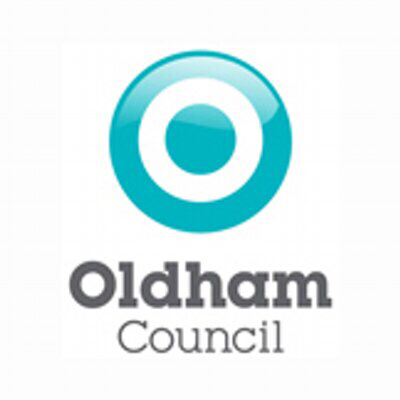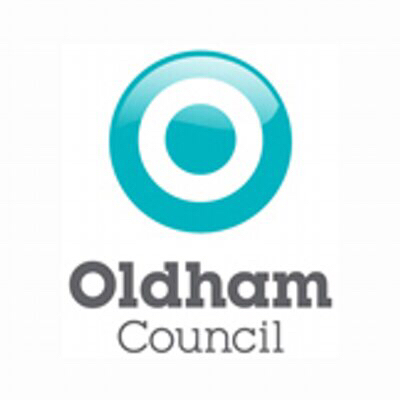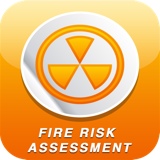Information
-
Name of company fire risk assessment is for:
-
Location of assessment
-
Address of where fire risk assessment was carried out
-
Prepared by
-
Company personnel assisting in assessment
-
Date assessment carried out
Executive Summary
Introduction
1 Premises details
-
Occupiers name
-
Owners name if different to above
-
Name of responsible person for fire safety within the organisation
-
Name of competent persons for fire risk assessments
-
Name of competent persons for maintenance programme
-
Name of competent persons for emergency action planning
-
Name of competent persons responsible for training
-
Brief details of building construction and approximate age of building
-
Number of floors
-
Floor area: (per floor)
-
Number of stairways in the building
-
Number of lifts in the building
-
Brief description of external areas and fire service access
-
Details of other premises if part of a multi-occupied building
-
Brief description of work activities, processes in the building.
2 Premises floor plan
3 The occupants
-
Hours the building is in use
-
Occupancy type
-
Total number of employees and contractors in the building at any given time.
-
Total number of members of the public or visitors at one time
4 Occupants at special risk
-
Are there Sleeping occupants
-
Are there disabled occupants
-
Are there occupants in remote areas
-
Are there Young persons under the age of 18 employed
-
Are there lone workers
-
Other activities
5 History of any previous fires effecting the premises
-
Details of past fires and action taken
-
Any additional action required
-
Has there been or is there any prohibition, alteration or enforcement notices served on the premise? (If yes give date and action required and date completed)
IGNITION SOURCES
6 Arson
-
Does the basic security against arson appear reasonable?
-
Is there sufficient control of unnecessary fire load in close proximity to the building or available for ignition by arsonists?
-
Is there any history of arson? If YES what action have been taken
7 Electrical sources of ignition
-
Is the fixed wiring installation periodically tested and inspected? If yes state date of last test
-
Are portable appliances tested/inspected? If yes state date of last test
-
Is there a suitable policy about the use of personal electrical appliances?
-
Is there a suitable limitation on the use of trailing leads and adapters?
-
Has the building an effective lighting protection system were appropriate?
-
Where lighting protection system is in place is it regularly inspected and tested?
-
Is Luminous Discharge Lighting installed? (If yes does the installation meet current standards)
8 Smoking
-
Are reasonable measures taken to prevent fires as a result of smoking?
-
Is smoking prohibited on the site if YES state what arrangements are made for smokers.
-
Is the appropriate smoking prohibition notices displayed at the building entrances?
9 Portable heaters and heating installation
-
Is the use of portable heaters avoided as far as reasonably practicable?
-
If portable heaters are used, are the more hazardous types (radiant bars and LPG) avoided?
-
If portable heaters are used are suitable measures taken to minimise the risk of ignition of combustible materials?
-
Are fixed heating installations subject to regular maintenance? If yes state date of last inspection
10 Cooking and heat emitting equipment
-
Are reasonable measures taken to prevent fires from cooking and heat emitting equipment?
-
Are ventilation filters cleaned or changed and ductwork cleaned regularly?
-
Where gas appliances are used within the extraction area are they interlinked with the extraction and fire alarm system?
-
Are there clearly marked emergency cut off switches for gas and electrical appliances?
-
Are suitable extinguishers available?
11 Hazards introduced by outside contractors and building works
-
Is there sufficient control over works by outside contractors (e.g. Permits to work & hot work permits)?
-
Are fire safety conditions and instructions communicated to contractors?
-
Are in-house maintenance personnel sufficiently controlled?
Any other sources of ignition
FUEL SOURCES
12 Hazardous substances?
-
Are all hazardous substances identified in the workplace?
-
Has all hazardous substances been assessed under COSHH?
-
Is there adequate and correct storage of hazardous substances in line with MSDS?
13 Fire and explosive atmospheres
-
Does any part of the building come under DSEAR regulations? If yes answer questions below
-
State type of dangerous substances at risk of fire and explosion and location in building, (flammable liquids, gases, dust, mist or vapour etc)
-
Explain the control measures in place to prevent explosion
-
State any additional requirements
14 Textiles and furnishings
-
Are textiles and furnishings compliant with the textile and furnishing regulation?
15 Housekeeping
-
Is the standard of housekeeping adequate?
-
Are combustible materials separated from ignition sources?
-
Is the unnecessary accumulation of combustibles and waste avoided?
-
Are combustible materials stored appropriately?
Any other sources of fuel
16 Means of escape from a fire
Horizontal evacuation
-
Is the building provided with adequate means of escape in case of an emergency leading to a place of safety?
-
Are exits easily and immediately openable where necessary?
-
Do fire exits doors open in direction of travel?
-
Have sliding or revolving doors been avoided as fire exits?
-
Are there adequate means of securing exits?
-
Are there reasonable distances of travel where there is a single direction of travel?
-
Are there reasonable distances of travel where there are alternative means of escape?
-
Are fire doors suitable and serviceable? (If no state all defects)
-
Are escape routes adequately protected and unobstructed?
-
Are there suitable fire precautions from all inner rooms?
Vertical evacuation
-
Are there sufficient stairways for the occupants in upper levels?
-
Are the stairways wide enough for all occupants to safely evacuate the building?
-
Are doors, walls and partitions to stairways suitably fire resistant to enable safe egress from the building?
-
Do the exits from stairways lead to a place of safety?
General information
-
Are there suitable means of escape for disabled occupants?
-
Is there management of occupants into and out of the building?
-
Are there emergency evacuation procedures in place with allocated persons to control the evacuation?
-
Are there suitable and safe assembly points away from any hazards?
17 Measures to limit fire spread and development
-
Is there a sufficient standard of compartmentalisation?
-
Are linings that promote fire spread avoided as far as reasonably practicable?
-
Are there voids between floors and ceilings with protection against fire and smoke?
-
Is there risk of fire spread above false ceilings?
-
Are there false ceilings with fire detection above ceiling?
-
Are false ceilings in good repair?
-
Is there ducting or ventilation in the building passing through rooms with fire stop?
18 Emergency lighting system
-
Is an adequate standard of escape lighting provided?
-
Where emergency lighting is installed is it checked and maintained regularly?
19 Fire safety signs and notices
-
Are fire safety signs and notices suitable and sufficient?
20 Means of giving warning in the event of a fire
-
Is there a suitable fire warning system to alert all occupants in the event of a fire?
-
Is a manually operated electrical fire alarm system provided?
-
Is automatic fire detection provided?
-
Is there remote transmission of alarm system?
21 Manual fire extinguishing appliances
-
Is there suitable and sufficient provision of portable fire extinguishers?
-
Are fire extinguishers serviceable? (State date last serviced and next due date)
-
Are there any actions required on fire extinguishers?
-
Are hose reels provided?
22 Automatic fire extinguishing systems
-
Type of system and location
23 Any other fixed fire extinguishing systems
-
Type of system and location
24 Procedures and arrangements
-
Person responsible for fire safety
-
Is there a fire policy?
-
Are there individual assessments carried out on young persons within the workplace?
-
Has an emergency plan been produced identifying the procedures for serious and imminent danger and for danger areas?<br>(In relation to article 15)
-
Are there competent persons available to assist in implementing fire safety arrangements?
-
Are appropriate fire procedures in place? (Including arrangements for calling the fire service)
-
Are there people nominated to respond to fire?
-
Is there appropriate liaison with the fire service?
-
Is there co-operation and co-ordination with others who may be affected by your activities?<br>(Article 22)
-
Does a routine in-house inspections of fire precautions take place?
25 Training and drills
-
Are staff given fire instructions on induction?
-
Do staff receive regular refresher training?
-
Are staff with special responsibilities given appropriate training?
-
Are fire drills carried out at least once a year?
26 Testing and maintenance
-
Is the workplace adequately maintained?
-
Is there weekly testing and annual testing and servicing of the fire detection and alarm system?
-
Is there monthly, six monthly and annual testing of the emergency lighting?
-
Is there weekly inspection and annual maintenance of fire extinguishing equipment?
-
Are automatic fire extinguishing systems checked regularly?
-
Is there weekly checks of fire doors and escape routes?
-
Is there six monthly and annual inspection of wet/dry risers?
-
Is there periodic inspection of sprinkler systems if installed?
27 Records
-
Are there records of fire drills?
-
Are there records of fire training?
-
Are there records of fire alarm testing?
-
Are there records of emergency lighting tests?
-
Are there records of maintenance and testing of other fire protection systems?
28 Fire development
-
Considering the information within this assessment describe the most likely worst case scenario fire situation that could be encountered within this building.
-
State what action is required to prevent this.
29 Facilities, equipment and devises for protection of fire-fighters
-
Are there any facilities for fire-fighters (if yes state facilities)
-
State maintenance arrangements for facilities
30 Overall risk rating
-
This risk rating is based on the structure and use of the building, occupancy and activities carried out within the building.
31 Fire risk assessment review date
-
Select date
32 Senior management signature
-
Signature of person in the organisation accepting responsibility for actions and communicating to employees and other persons effected by. Their activities
-
Signature of person completing the assessment.











